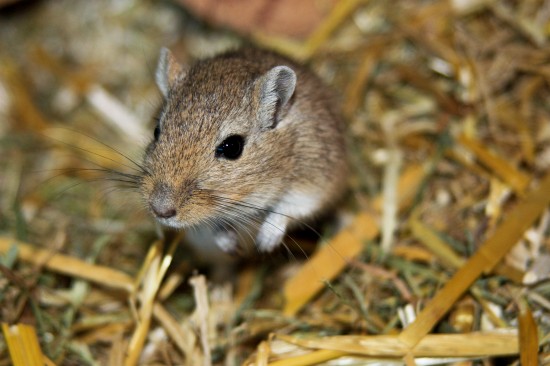

If you are going to adopt a gerbil and introduce it to one you already have, it’s important to understand their behaviour and how they socialise with each other. In the wild gerbils socialise in small family groups. They do interact socially with each other, often grooming one another, playing, chasing, and helping each other on hunts.
They do however keep their family groups closed from other gerbils. They will show aggression to any other gerbils they come across, especially the older members of the group looking to protect their young.
They act aggressive as a defence because they are scared and do not know what to expect from the other gerbil. If you can build up some trust and confidence between a new gerbil and the gerbil you already have, you will be able to introduce the new member to the existing cage.
When introducing gerbils over the age of 10 weeks to one another in captivity you need to do so strategically. Below are some steps to follow, this method has proved very effective and has a high chance of success. Be aware however, this is for introducing one gerbil to another, do not attempt this with multiple gerbils as that is not recommended.
You need to divide a large cage into two sections, or buy a smaller cage that can easily fit into the larger cage. Place one gerbil in each section or cage, this allows the gerbils to see and smell each other without having any physical contact. You cannot introduce the gerbils without this protective barrier until they are comfortable with each other’s presence, it’s important there are no incidents where they accidentally meet because this can jeopardise the process.
Swap the gerbils around between sections several times a day, or as often as possible if you are not able to switch them that often. This will help both the gerbils become familiar with each others’ scent. You will see them investigating the other gerbils’ living space, they’ll become more comfortable and not feel threatened.
Continue to swap them between each others’ sections for around 7 days. During this period you should notice they become a lot more curious towards each other through the glass dividing them, and they will show little or no signs of aggression. The gerbils may even start sleeping near each other with the divider keeping them apart, this is a good sign that things are going well.
After around 7 days and seeing positive results from the above steps you can now release both gerbils into the same cage. Place them on opposite sides of the cage and allow them the time and space they require to discover each other. For the first 30 minutes or so you will need to be nearby in case there is any fighting. Be aware that they will probably play fight a little to feel out the situation, this usually involved chasing each other around, some boxing, and squeaking noises.
Do not intervene if they are just play fighting, if they start fighting for real however you’ll need to separate them again. When gerbils fight they usually lock together in a ball and roll around while biting each other.
After the first 30 minutes have passed and the gerbils are behaving passive towards each other you can relax a little. Continue to keep an eye on them for the next several hours, but you do not need to hover over them. The initial 30 minutes is always the most tense, once this time has passed there is a very good chance they are going to get along.
If for any reason they do start to fight with each other you’ll need to separate them. Go back to step one, separate them into two individual sections and start the process again. The second time round you should keep them separated for longer than 7 days.
The steps to introduce gerbils safely are outlined above. These steps do carry a high chance of success, but here are some tips that will make the process go even smoother or may explain why you will come across problems.
Younger gerbils are much more receptive to meeting and coexisting with other gerbils. If a gerbil is less than 10 weeks it’s very unlikely to cause any difficulty, in contrast a gerbil over a year in age is going to be very stubborn.
Dividing your cage into two parts can be difficult, or you may not have a cage large enough. There are cages designed for introducing pets available on the market, or it is just as easy to buy another smaller cage to place inside your existing cage.
Never try to introduce a single gerbil to more than one other gerbil. It is just far too unlikely that an established group of gerbils will allow a new member to join them.
Females are harder to introduce than males. While not impossible, you may need to allocate a longer period of time before releasing them from their separate cages.
This method is called the ‘’split cage” method and has been proven to be very effective in introducing gerbils to one another safely. Gerbils are defensive animals, they will only show aggression if they feel threatened or are in a stressful situation. They do not want to be aggressive, so understanding their psychology and allowing them the proper time to become comfortable with each other is the key.
1If your gerbils become aggressive towards one another and cause any injuries you’ll need to seek veterinarian advice as soon as possible. You cannot let wounds go untreated and risk further infection. Additionally, if for any reason it appears that the gerbils you are introducing are just not willing to get along, you will have to keep them in separate cages permanently.
Copyright © 2005-2016 Pet Information All Rights Reserved
Contact us: www162date@outlook.com